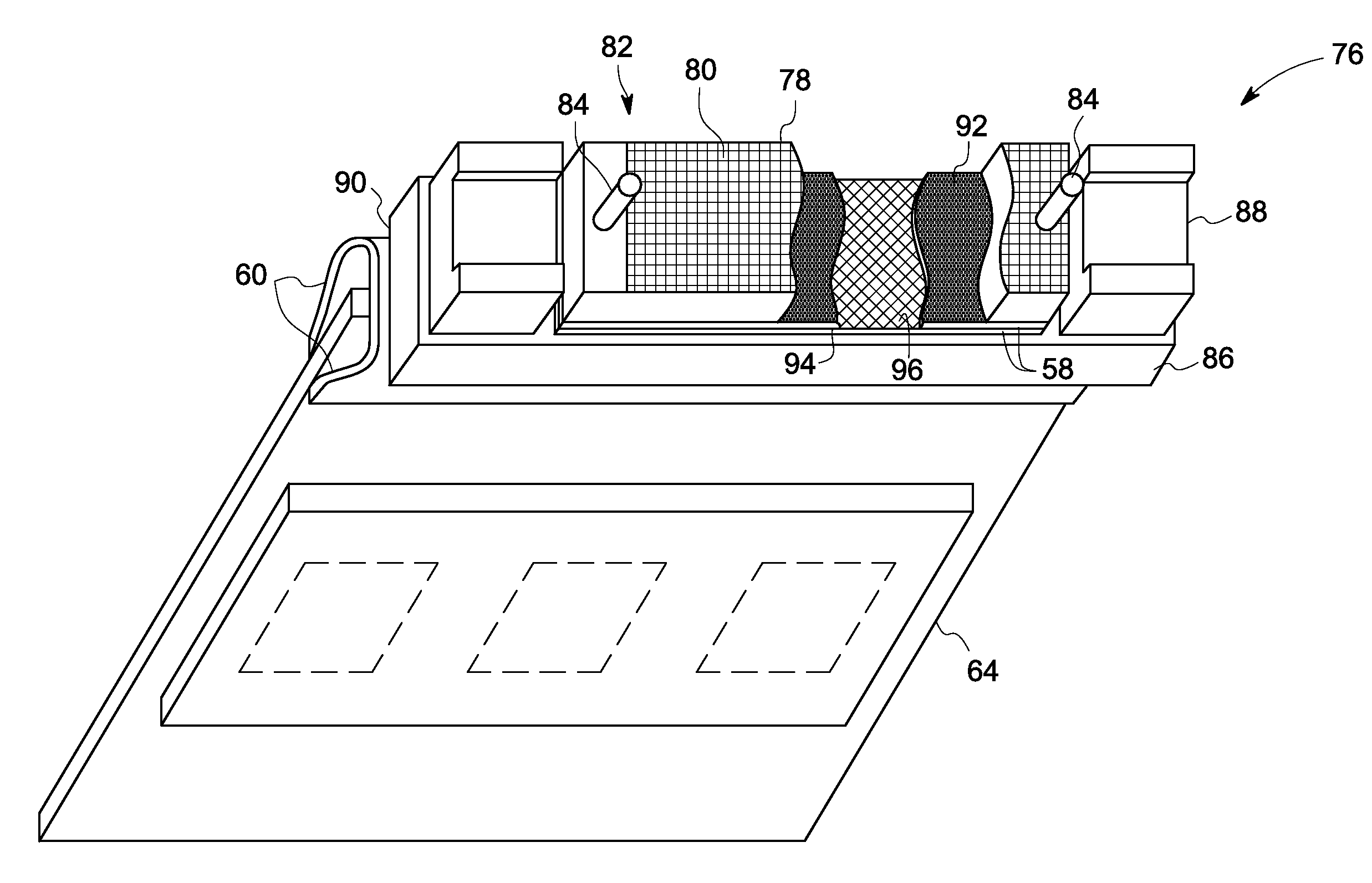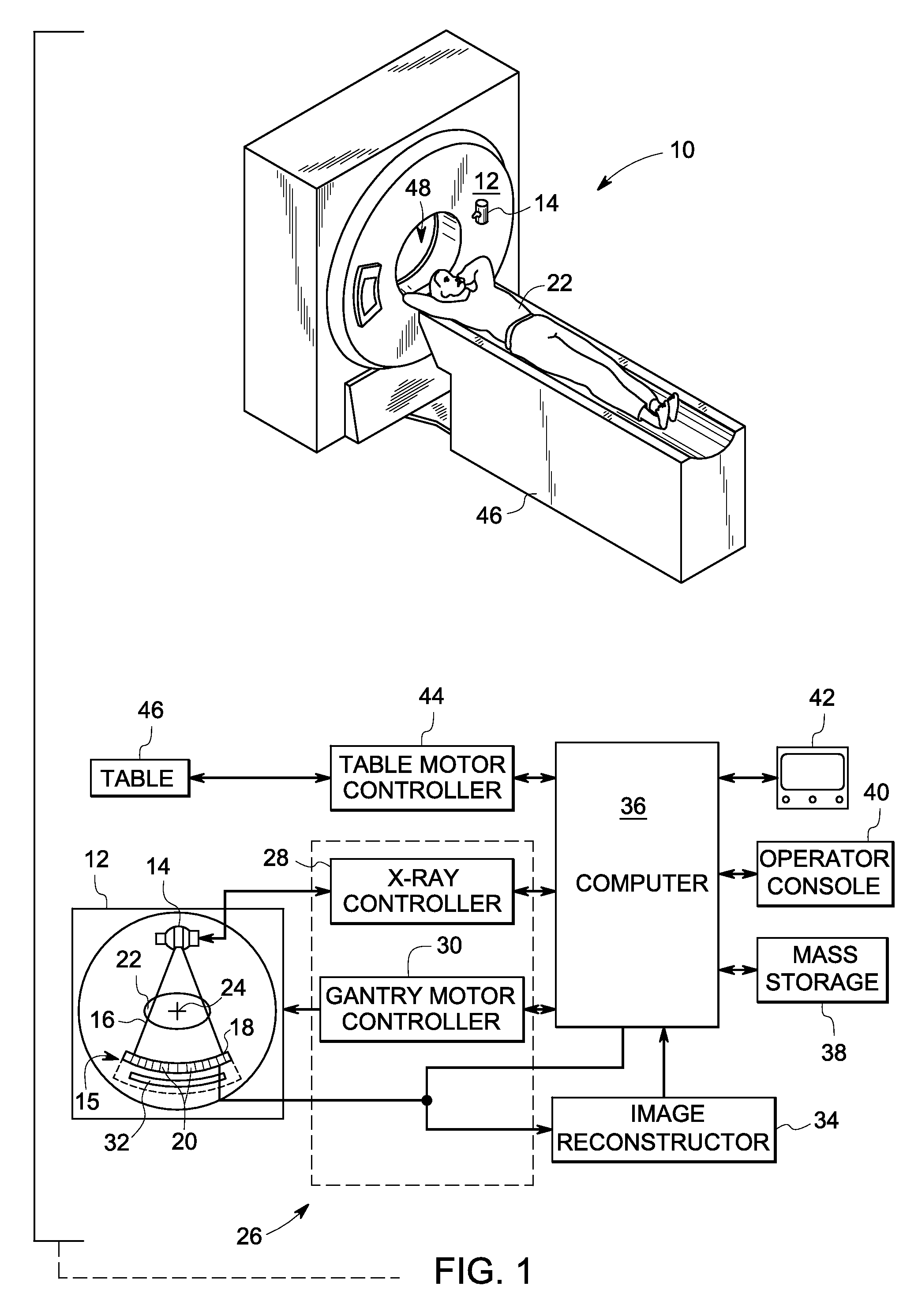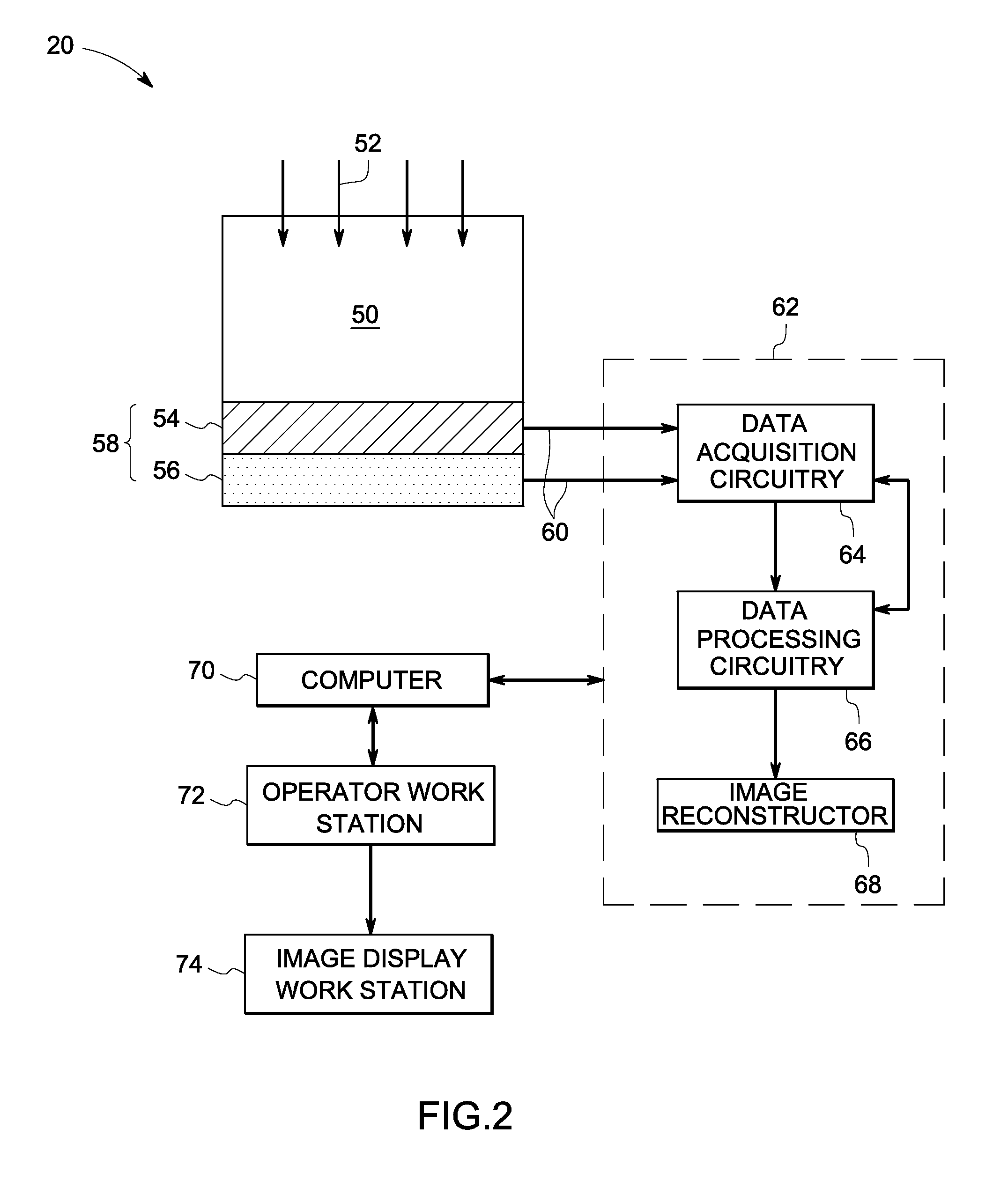Multi-layer radiation detector assembly
a detector array and multi-layer technology, applied in the field of radiographic detectors for diagnostic imaging, can solve the problems of detectors not being able to provide data or feedback as to the number and/or energy of photons detected, detectors not being able to provide energy discriminatory data or otherwise count the number and/or energy of photons actually received by a given detector element or pixel, and photodiodes not being able to discriminate between the energy level
- Summary
- Abstract
- Description
- Claims
- Application Information
AI Technical Summary
Benefits of technology
Problems solved by technology
Method used
Image
Examples
Embodiment Construction
[0018]In accordance with one aspect of the invention, a CT imaging system is provided. The CT imaging system includes a layer detector capable of performing both photon counting and energy discrimination of X-rays at any given flux rate simultaneously and includes a DAS with a readout which is capable of distinguishing both the energy integrating and photon counting data. The present discussion is provided in the context of a 3rd generation CT system. However, the present discussion is equally applicable to other systems. Though the discussion focuses primarily on detectors for measurement of X-ray flux levels or energy levels in a medical imaging context, non-medical applications such as security and screening systems and non-destructive detection systems are well within the scope of the present technique. Moreover, while the detector structure and arrangement may be used in energy discriminating computed tomography systems, the detector may be used in other systems, such as other ...
PUM
 Login to View More
Login to View More Abstract
Description
Claims
Application Information
 Login to View More
Login to View More - R&D
- Intellectual Property
- Life Sciences
- Materials
- Tech Scout
- Unparalleled Data Quality
- Higher Quality Content
- 60% Fewer Hallucinations
Browse by: Latest US Patents, China's latest patents, Technical Efficacy Thesaurus, Application Domain, Technology Topic, Popular Technical Reports.
© 2025 PatSnap. All rights reserved.Legal|Privacy policy|Modern Slavery Act Transparency Statement|Sitemap|About US| Contact US: help@patsnap.com



